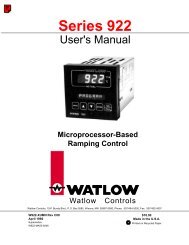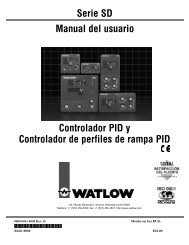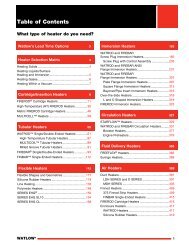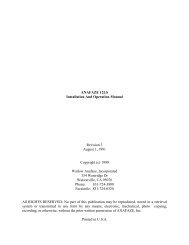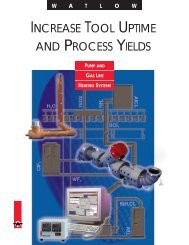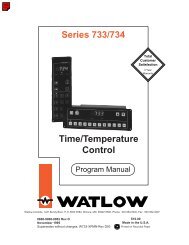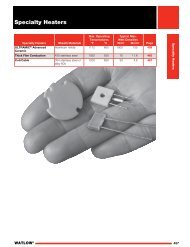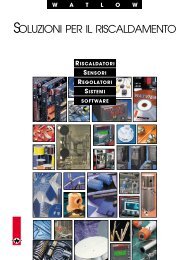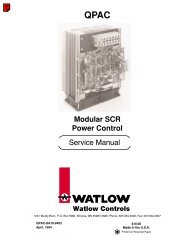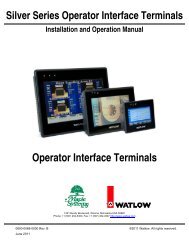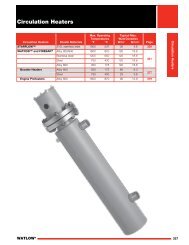pid practical guide.pdf - Watlow
pid practical guide.pdf - Watlow
pid practical guide.pdf - Watlow
Create successful ePaper yourself
Turn your PDF publications into a flip-book with our unique Google optimized e-Paper software.
the Autotune Set Point four times to complete the autotuning process. Once complete,the controller controls at the normal set point, using the new parameters.Autotune beginsFigure 3.1Process Set PointAutotune completeAutotune Set Point(90 percent of process Set Point)3.2 Adaptive Tune (TRU-TUNE+)This feature is best used when an application requires frequent set point changes overa large processing or temperature range. It should also be used where load variations(i.e., increased material flow or variations in flow demand) are common. Thesedisturbances modify the thermal loading characteristics and therefore requiremodifications to the tuning parameters in order to maintain superior controllability of thesystem. TRU-TUNE+ utilizes a set of proprietary expert tuning rules to calculate andadjust the Proportional, Integral, and Derivative parameters without further userintervention. This feature can be viewed as a dynamic (while the control is activelycontrolling) fine tuning mechanism for the parameters already established in the initialauto-tuning.TRU-TUNE+ TM offers other advantages as well in that it can tune loops more precisely(plus or minus 0.1 degree Fahrenheit) than controls utilizing auto-tune or manual tuneprocedures. While TRU-TUNE+ TM can also tune both heating and cooling Proportional,Integral, and Derivative parameters, it will also reduce or eliminate overshoot whenapproaching Setpoint as well.3.3 Manual TuneIn some applications, the autotune process may not come up with appropriate tuningparameters (process characteristics you desire) for Proportional, Integral, and Derivative.If the autotune does not provide satisfactory results, you will have to perform a manualtune on the process. Manual tuning allows the user to set each parameter individually forProportional, Integral, and Derivative. Below, the reader will find recommended steps to12



